Marketing has always been about connection. Brands have always been reliant on catchy jingles, bold magazine spreads, and unforgettable Super Bowl ads which made you laugh or cry. The best marketers were not just selling products, they were telling stories, creating emotions, and building relationships with their consumers. But with the rise of algorithms, data points, and machine learning models they now have the ability to predict what we want and now marketing is not just about intuition anymore. These systems have evolved to know what we want even before we do and that has become the new shift. Artificial Intelligence has now officially entered the chat and it is no longer this futuristic fantasy, it is already here, embedded in the way companies interact with their audiences. AI-driven tools have the ability to analyze consumer behavior, automate content, and personalize experiences with a sort of precision that no human team is capable of matching yet. From the article “The evolving role of artificial intelligence in marketing: A review and research agenda” the authors talk about how companies like “Google, Rare Carat, Spotify, and Under Armor are among the expanding list of firms enhancing their performance through AI-based platforms, leveraging AI to enhance customer interaction and improve market forecasting.” As AI’s influence seems to grow, so do the concerns. Is AI making marketing more effective or stripping it of its soul? Are machines able to truly understand what moves people? And most importantly, where do humans fit into this increasingly automated world?
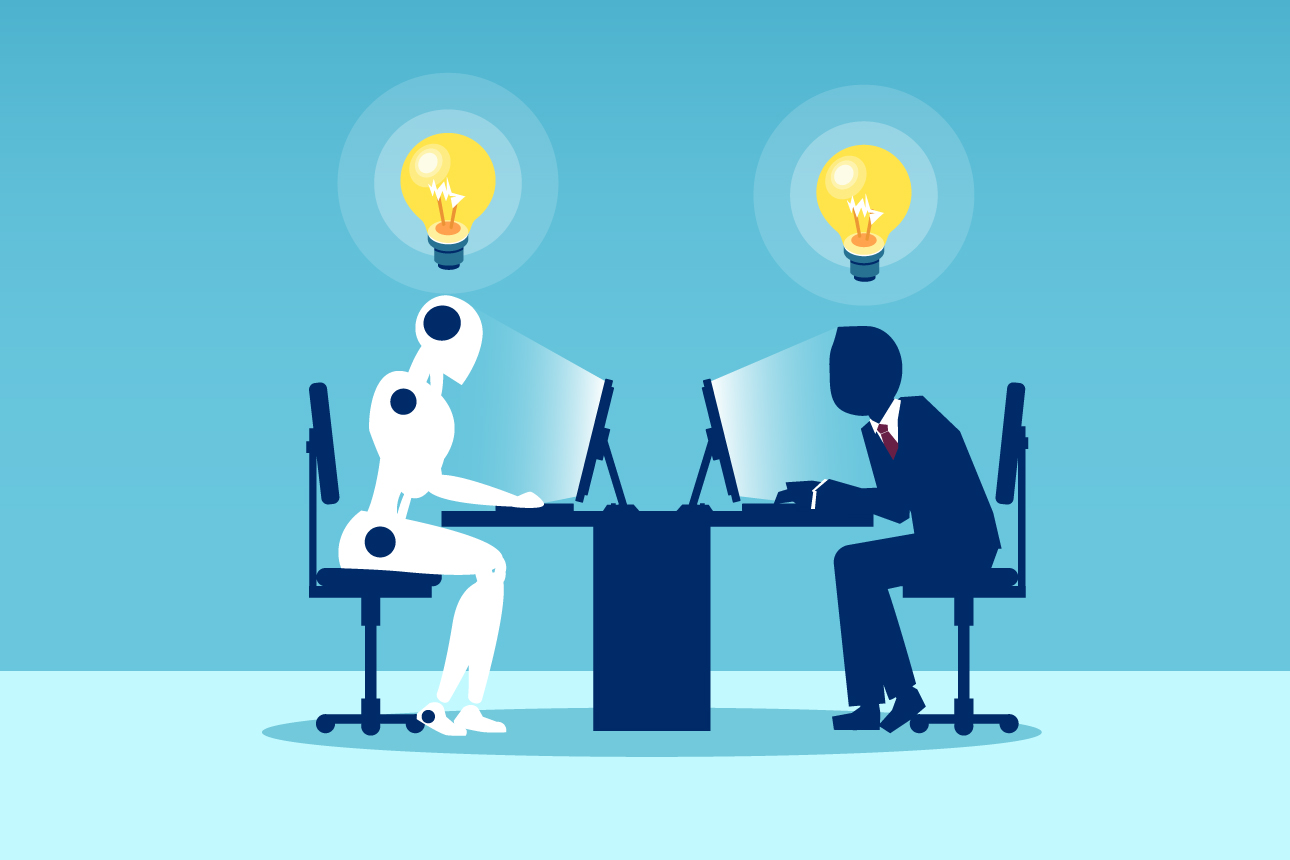
THE RISE OF
AI IN MARKETING
If you were to step into any modern marketing office, you would see AI working quietly behind the scenes. It is in the software that predicts when the best time to send an email is, the chatbots that answer customer questions, and the algorithms that are able to determine which ads show up on your social media feed. If you open a dashboard, AI will tell you which headlines will get the most clicks and which products will fly off the shelves. Sarah Yates, a marketing consultant manager at Ernst & Young (EY), one of the “Big Four” global accounting and consulting firms, shares how this would look in practice. “I’m currently working on an engagement for Comcast where we’re building their email marketing platform using the Salesforce Marketing Cloud,” she shares. “EY also has a tool called EYQ, it’s like ChatGPT for EY, that supports our marketing efforts.” Arnaund De Bruyn, Associate Professor of Marketing at ESSEC Business School, points out, many marketing managers still are lacking a clear sense of understanding of AI’s capabilities and limitations, and are often overestimating its “magical powers” while underestimating its risks. Sarah adds how, “Sourcing is difficult–sometimes AI just makes things up. That’s one of the biggest limitations I’ve encountered.”
Can AI Truly Create?
Efficiency is valuable. Marketing is not just about speed, it is about making people feel something. Take Nike’s 2020 “You Can’t Stop Us” campaign: a split screen montage of athletes from different backgrounds, seamlessly edited to highlight shared motion, resilience, and unity during the pandemic. The visuals were stunning, but it was the emotional arc, the human story, which is what made it unforgettable. AI could cut the footage, but would it understand the story behind athletes and perhaps build the human emotion behind it?
This is the heart of the creative debate, AI is able to remix what already exists, but it does not know what it is like to fail, struggle, win, and then be able to tell a story about it. AI’s content generation capabilities heavily rely on analyzing existing data and patterns, which can limit its ability to achieve genuine innovation. De Bruyn further argues that AI lacks “common sense” and struggles to interpret the cultural nuances and emotional depth that humans instinctively understand. Peter Sfraga, VP of Marketing at Healthcare IT Leaders, a healthcare IT consulting firm, shares “as my boss says, we are building our own coffins. That’s what it feels like working with AI”. Still, he acknowledges its power, “normally it would take a month or two to write a whitepaper. We can do it now, with edits and reviews, in under two weeks, maybe even one week.” The speed comes at a cost, and “writers are getting hit the hardest, but really, any junior roles are at risk,” Peter says. “I’m hoping senior roles are safe, but I don’t know, and it’s genuinely concerning,” his advice? Marketers must evolve and learn how to write better prompts, analyze data, and truly become fluent in using AI tools, not just fighting them.
There’s no denying that AI has transformed marketing efficiency. The days of manually A/B testing ads over weeks are gone and AI now “autonomously create[s]higher-degree constructs from raw data, with limited or no human intervention’, streamlining tasks that once required extensive manual effort.” De Buryn states. Consider Heinz’s 2022 campaign for instance. The brand used DALL·E 2, an AI image generator, to create visuals of ketchup. The result? Even without being told the brand name, AI was able to produce images resembling Heinz bottles. That insight became the backbone of a clever campaign: “Even AI knows that ketchup is Heinz.” It was fast, on-brand, and entirely AI-powered. This campaign was not just fast and efficient; it also used smart marketing with the help of AI to highlight how recognizable the Heinz brandis without ever naming it outright. While AI can mimic style and generate visuals, it still lacks what makes marketing truly stick: human emotion.
In “The Pisanos”, a speculative Porsche ad created by László Gaál who used tools likeVeo2 and Google DeepMind, AI was able to produce a visually stunning short film that looked like a luxury car commercial. Yet, despite the high production quality, the emotions felt manufactured. The commercial was a great example of how far generative tools have come but also a reminder that storytelling is more than visuals. Itis about meaning, memory, and emotion—things that AI does not experience and therefore cannot fully create. This is why marketers, like Sarah, say AI works best as a collaborator, not a replacement. “AI makes my job easier by being able to create and develop content,” she says. And she is not alone, many marketers now rely on tools like ChatGPT to brainstorm, draft, and refine messaging quickly. At EY, the marketing team recently used AI to support a creative campaign for SXM, showcasing the tool’s potential in action.
Ethical Challenges and
Data Privacy Concerns

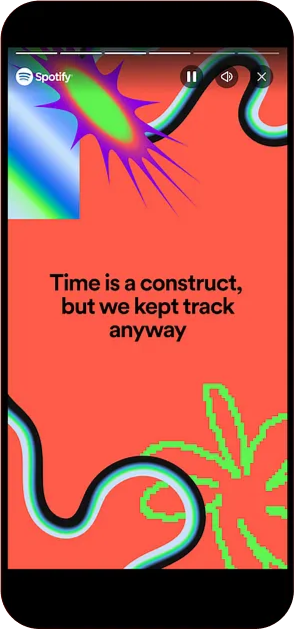
Beyond creativity, AI’s growing role in marketing raises another concern: Privacy. Every click and every search is being tracked, analyzed, and fed into an AI model that determines exactly how to market you. This raises a big question though: Where is the line between personalization and creepy overreach? Data Collection through AI must align with regulations like the General Data Protection Regulation and always require explicit client approval, as the article on the evolving role of artificial intelligence in marketing states.
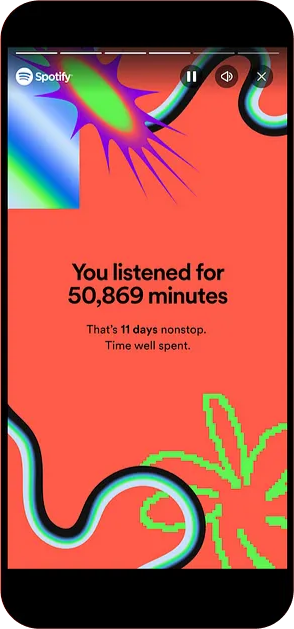
“Spotify Wrapped”, a popular end-of-year campaign uses AI to analyze and summarize a user’s music listening habits. Each December, Spotify delivers a personalized recap highlighting your top songs, genres, artists, and even how many minutes you spent listening. Many users seem to find it fun and engaging, eagerly sharing their results on social media. Others though are a bit freaked out by just how intimately the music listening platform seems to know their mood or routine solely based on their listening patterns. Sure, it is a fun way to engage users and it is very effective, but it also does highlight the growing intimacy between platforms and their audiences.
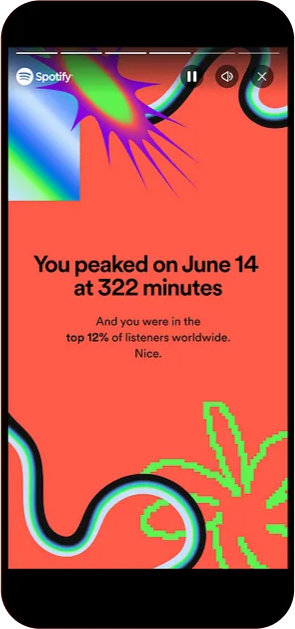
Another example of the growing intimacy between marketing and its consumers is the story reported in the New York Times in 2012 by Charles Duhigg. The article described a father who had walked into Target upset that his daughter was getting maternity coupons in the mail. He had thought that the company was encouraging her to get pregnant, but a few days later, he had called back to apologize, because it turns out, she was actually pregnant, and Target’s algorithm had just figured it out before he did. By using subtle changes in shopping behavior, Target’s marketing team had developed a model to predict pregnancy. Her buying a certain type of lotion or certain type of groceries predicted that she may be pregnant. While it was quite a smart move from a business perspective, it also raised a lot of questions about how much companies should know about us and when marketing becomes a bit too personal.
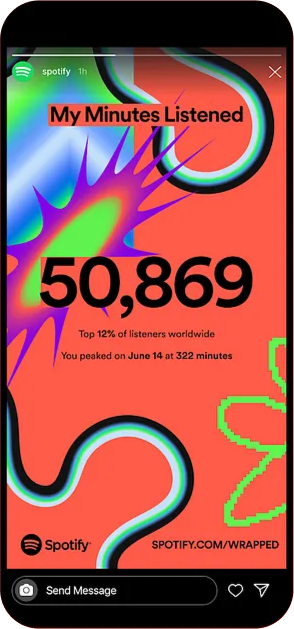
At EY, Sarah hasn’t faced any privacy issues directly, “I don’t use AI with confidential information, so I haven’t really encountered privacy issues myself,” she explains. That said, privacy still remains a critical concern across the industry, especially when data collection practices go unchecked. Consumers are more aware than ever of how their data is being used, and many are uncomfortable with the idea of AI knowing them better than they know themselves. According to De Bruyn, the high complexity of these models transforms them into “black boxes,” and many managers have already resolved to accept their predictions at face value.’’




AI and Human
collaboration
The best of both worlds
The future of marketing is not AI versus humans, rather it is AI and humans, working together. AI can crunch numbers, analyze trends, and optimize campaigns, but it still needs human guidance. It needs people who understand nuance, creativity, and ethics; things that do not always fit into a dataset. For example, Dove’s “Real Beauty” campaign, which was launched by Unilever in the early 2000’s, featured real women of various shapes, sizes, and ages in its advertisements. This campaign aimed to redefine traditional beauty standards. It was not driven by data alone, it also came from real insights of how women see themselves and how beauty is defined. As mentioned earlier, Nike’s “You can’t stop us” ad during the pandemic was built around emotion, resilience, and unity. These marketing campaigns stuck with people, not because they were optimized, but because they meant something, they were human and that is exactly where AI cannot compete. It does not know what it feels like to be insecure or inspired, it can mimic language, but it does not know why something matters. We have seen what happens when AI tries to go about it alone, for example in 2003, Private Island, a London-based production company, created a fully AI- generated beer commercial. This commercial went viral, not for its brilliance but rather because of just how strange and unsettling it was. The ad had distorted human figures, bizarre movements, floating drinks, it looked like a dream gone wrong. It showed what AI can do, technically. But emotionally? It completely missed the mark, there was no connection and that is the danger of removing the human lens from storytelling; it loses the human touch.Another example of how AI is being used to support and not replace human creativity, is Coca Cola’s “Create Real Magic” campaign. Launched in March of 2023, the company teamed up with Open AI and Bain & Company to build an AI-powered platform that let digital artists experiment with the brand’s most iconic assets. By using tools like ChatGPT and DALL·E, people had the ability to remix elements like the contour bottle, polar bears, and the vintage Coca-Cola script into a completely original artwork. Artists from around the world were invited to submit their creations, and the best pieces were featured in New York’s Times Square and London’s Piccadilly Circus. This showed that it was not just about testing AI’s capabilities, it was about inviting real people to cocreate with it. The company had made it clear that this was just beginning. Coca Cola’s CMO, Manuel Arroyo, said that “we’re just scratching the surface of what we believe will help create the industry’s most effective and efficient end-to-end marketing model…We will begin to leverage OpenAI’s technology in our marketing function to re-imagine how we produce creative content…” The goal was not to replace creative teams, rather it was more about how companies can speed things up, improve personalization, and open new doors for collaboration. Pratik Thakar, who is the Global Head of Creative Strategy and Integrated Content for the Coca‑ Cola Trademark said, “it’s an experiment to see where co-creation can take us.” From these examples it is clear that the best marketing strategies of the future will have both AI’s analytical power and human storytelling. Though the real challenge is not whether AI can replace human marketers, it is how marketers can learn to use AI as a tool without losing their own creative spark. AI should handle the data, the automation, the optimization. But when considering thestorytelling, the emotional intelligence, and the ability to connect? That’s still a job for humans.

The Future of AI
in Marketing
AI is here to stay and it will continue shaping marketing in ways we cannot even imagine yet, making campaigns more efficient, more personalized, and more data driven. Through examples, like Dove’s “Real Beauty” Campaign, Nike’s “You Can’t Stop Us”, Private Island’s AI- generated beer commercial, and Coca-Cola’s “Create Real Magic” campaign it has become pretty clear that while AI can support marketing, it cannot lead it without human insight. What separated Dove’s and Nike’s campaign from the AI-generated beer commercial was not just the production quality, but also the intention. Human led campaigns resonated because they were rooted in emotion, cultural understanding, and storytelling. De Bruyn mentions how “marketing deals primarily with customer behavior and human interactions, and as such, relies heavily on tacit knowledge and common sense—a kind of knowledge that is especially challenging to transfer to and from an AI model.” The heart of marketing is human connection, and that cannot be automated. For marketers stepping into this new era, the goal is not to outsmart AI, it is to use it wisely, enhance creativity rather than replace it, and to ensure marketing remains a balance of science and art. At the end of the day, no matter how advanced AI becomes, the best marketing will be one that truly resonates with its consumers and be the kind that makes people feel something.
